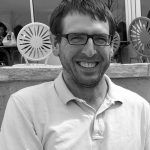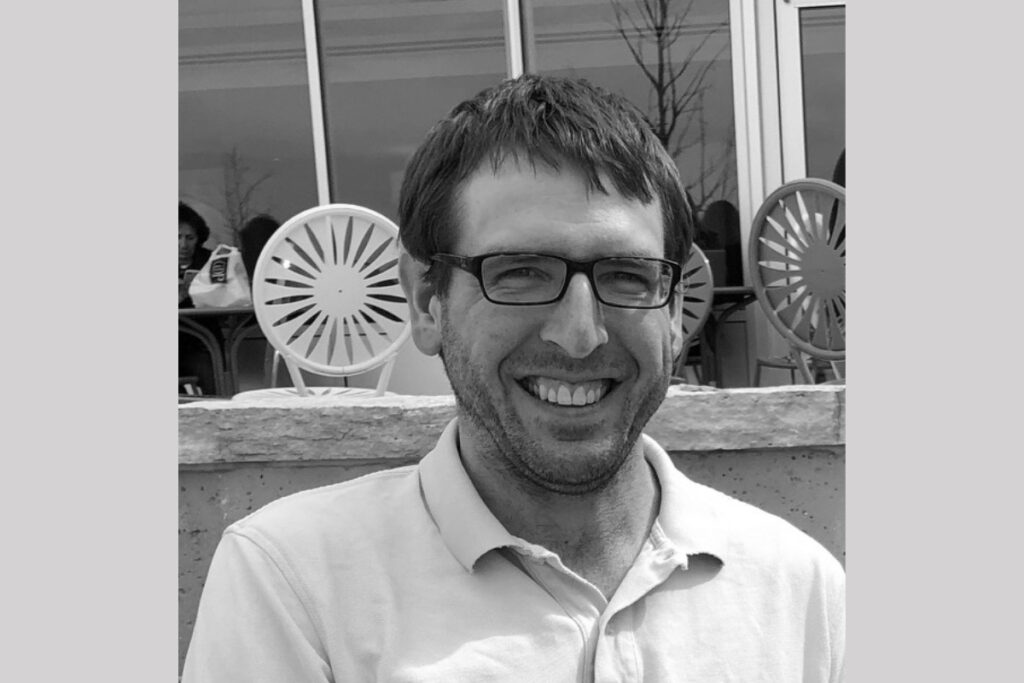We’re taking time to get to know the members of the GSA’s Early Career Scientist Committees. Join us to learn more about our 2020 early career scientist advocates.

Frederick Boehm
Community and Member Engagement Committee
University of Massachusetts Medical School
Postdoc Researcher
Research Interest
Statistical methods are essential for the design, analysis and interpretation of genetics studies. The advent of new gene mapping techniques has necessitated a parallel development of statistical methods research, including statistical tools and methods that guide experimental design and data analysis. These tools and methods address questions relating to genetic map construction, inference of genotypes at positions between genetic markers, and approaches to identifying genes that affect more than one trait.
In this context, my research focuses on developing statistical methods for genetics studies in complex crosses of model organisms, such as mice. For my PhD research, I developed a statistical test for determining pleiotropy versus separate quantitative trait loci (QTL) in instances when two traits map close to each other. Many gene mapping studies measure dozens of traits within a single group of subjects. Traditionally, these measured traits are mapped one at a time to find QTL for each trait. When two traits map to the same chromosome region, there are two possibilities. The first one is that these two traits share a single QTL, i.e., a QTL that affects both traits. Alternatively, separate QTL may be responsible for the two traits. For my doctoral research, I used a multivariate QTL mapping strategy to distinguish the two possibilities.
For my postdoctoral research, we are working on statistical methods for tuberculosis-related genetics studies. This includes developing methods for combining information from QTL mapping studies in two related mouse cohorts. Our goal is to use QTL mapping results from Collaborative Cross mice to enhance the statistical power to detect QTL in Diversity Outbred mice. Achieving this will move the field forward by offering a way to combine the strengths of multiple studies.
Our approach has three steps. First, we map QTL, with eight-allele models, in the Collaborative Cross mice. These models typically have too many statistical parameters because they assume that every founder mouse line has a distinct allele. Fortunately, Crouse, Kelada, and Valdar recently reported a method for inferring the number of functional alleles at a QTL. With results from their approach, we can fit statistical models with a smaller number of parameters. We think that this strategy will enable us to identify coincident QTL in the two populations.
As a PhD-trained scientist, you have many career options. What career paths interest you the most?
I’m most eager to continue to develop as a researcher at the interface of genetics and statistics. The two disciplines have a long, rich history of driving innovation in each other, and I expect this trend to continue. New biological technologies offer a wealth of opportunities for applied statisticians like me. Ultimately, I’d like to apply my training in biology and statistics to improve scientific understanding of complex trait genetics.
The statistician George Box described the role of a collaborative statistician vis a vis that of a scientist. In Box’s vision, a scientific question motivates statistical methods development, which, in turn, leads to their application to achieve scientific conclusions and ask new scientific questions. Such a cycle, Box argues, has the potential to perpetuate itself and, in so doing, advance both the scientific discipline and applied statistical methodology.
For my career path, I want to continue working at the interface of genetics and statistics. As for what that will look like, I am open to a number of possibilities. I see great research opportunities at universities, government laboratories, and biotechnology companies. A career at a university or a government laboratory would allow me to continue to develop research skills in biomedical data science. Biotechnology companies offer careers in applied biomedical research, which I also find highly appealing. I haven’t yet worked in a government laboratory or a biotechnology company, but I’m trying to build a professional network that will offer insights into both settings.
In addition to your research, how else do you want to advance the scientific enterprise?
From my time as a college student volunteering at a homeless shelter, I’ve recognized that while curiosity is universal, opportunity is not. While I grew up in a relatively affluent home and never worried about where I’d sleep, many students don’t have the opportunities that I was given. While I could afford to forgo work while in college, many of my classmates worked multiple jobs to make ends meet. As a result, they had little time for enrichment activities like mentored research projects. A mentored research experience often encourages a student to pursue further education, but the opportunity to have such a positive experience is limited. These early experiences shaped my interest in promoting science and scientific careers for individuals from historically underrepresented groups. I want to work with underrepresented undergraduate scientists to encourage them to continue in scientific careers. Through serving as a research mentor to undergraduate scientists, I hope to make scientific careers more accessible.
I recently read a Neuron article that describes an approach to more equitable citations in journal articles. Specifically, the researchers developed software tools to guess the sex of authors in a bibliography. With this information, scientists may recognize and correct sex biases in their own bibliographies. I would like to see this adopted in other research communities. I’d also like to see more research on promotion and retention of minorities in science careers. Admittedly, I have much to learn.
As a leader within the Genetics Society of America, what do you hope to accomplish?
I aim to:
- Make scientific research careers more accessible.
- Develop and implement strategies to encourage minority students to pursue science careers.
- Rigorously evaluate such strategies.
- Promote science literacy among scientists and non-scientists.
To address points 1 and 2, I’m collecting scientific articles that rigorously examine approaches to supporting minorities in scientific careers. We will share an annotated list of these resources on the internet.
To address point 3, I’ve begun to read scientific literature that describes methods for evaluating such interventions. While assessing outcomes of an intervention can be difficult, it is a crucial step in understanding what works.
To address point 4, I’ve served as a member of the GSA Community and Member Engagement Committee. One of our programming efforts involves a monthly webinar. Two early career scientists present each month.
Previous Leadership Experience
- Statistics Department Social Committee Member, University of Wisconsin-Madison
- LOCUS Leadership Training Program Participant, University of Wisconsin-Madison School of Medicine and Public Health
- Founder and Director, The Salvation Army Learning Center
- Coach, Westborough Mathcounts Team
- Cub Scouts Den Leader































